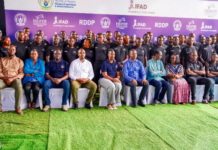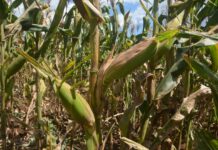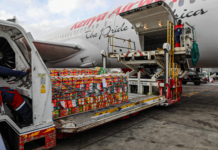
A new baseline survey on emerging pests in Eastern Africa by the Food and Agriculture Organization of the United Nations (FAO) and Subregional Office for Eastern Africa (SFE), has highlighted that the global and regional spread of pests has increased dramatically in recent years as a result of climate change.
The FAO survey- part of the programme support to the establishment of the Eastern African Emerging Pests Programme on Early Warning, Preparedness and Response System also indicate other causes for the spread of pests as globalization, and trade as well as reduced resilience in production systems due to decades of agricultural intensification which have all played a part.
It showed the combined efforts of stakeholders in the plant health system – including ministries of agriculture, regulators, and extension agents, and smallholder farmers – in tackling crop pests which threaten livelihoods and food security.
Among the stakeholders which took part in the survey include the Centre for Agriculture and Bioscience International (CABI) scientists from its regional centre for Africa in Nairobi, Kenya who were involved in the development of survey tools, data collation, analysis and drafting of the report which they did as part of the project ‘Increasing safe and efficient trade of agriculture in East Africa.’
Featured pests
The Eastern African Emerging Pests Programme on Early Warning, Preparedness and Response System-features pests such as the papaya mealybug, fall armyworm and desert locust.
Countries that will benefit from the system include Burundi, Djibouti, Eritrea, Ethiopia, Kenya, Rwanda, Somalia, South Sudan and Uganda.
According to CABI, five invasive alien pest species studied cause USD $0.9 billion to USD $1.1 billion a year in economic losses to smallholder farmers across the region representing 1.8 to 2.2 percent of total agricultural GDP for the subregion.
These losses are expected to grow to USD $1.0 billion to USD 1.2 billion per year over the next five to ten years highlighting and justifying the urgent need for coordinated responses at national, regional and international levels.
Threat to economic growth and sustainable development
The survey goes on to state that invasive species are an important threat to economic growth and sustainable development. As such, the achievement of the United Nations Sustainable Development Goals (SDGs) is significantly hampered by the impact of invasive species.
Among the pest alert and early warning systems outlined in the survey is the Fall Armyworm Monitoring and Early Warning System (FAMEWS) which uses phone app technology as well as the CABI-led Pest Risk Information SErvice (PRISE).
The latter is an innovative crop pest and disease risk forecasting product designed for smallholders and commercial producers in developing countries.
Bringing together a broad range of stakeholders, including plant protection authorities, space experts, private sector companies and the farmers themselves, PRISE uses state-of the-art crop and pest modelling techniques to provide users with advanced warning of a damaging outbreak and appropriate advice to mitigate crop losses.
Also outlined in the report are CABI Plantwise plant clinics which work like clinics for human health: farmers visit with samples of their crops, and plant doctors diagnose the problem and make science-based recommendations on ways to manage it.







